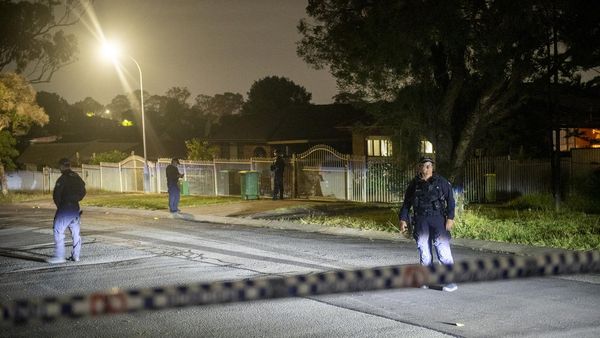
It all started with 100 blue bicycles. Fifteen years ago, Australia’s first public bike hire scheme launched in Melbourne to considerable fanfare.
Four months later, Brisbane followed suit, partnering with multinational advertising company JCDecaux and a fleet of 2,000 yellow bikes emblazoned with Lipton Ice Tea logos.
Since then, various iterations of bike shares have come and gone across the country. They’ve been electrified, Uber-fied, vandalised, beloved and reviled. They’ve been flung into gutters, thrown into waterways, taken people to work, and carried others home.
Now Lime, the world’s biggest shared-electric-vehicle company and Australia’s largest micromobility provider, is preparing to go public. Eight years after it launched in Australia with a trial of e-bikes in a handful of inner-city suburbs, the San Francisco-based startup , which receives funding from Uber and Google, is planning to list on the New York Stock Exchange next year.
At the same time, it is plotting an expansion of its Australian empire, with bikes in western Sydney and the potential for more bikes in inner Melbourne. The company also operates in Brisbane and on the Gold Coast, and says it wants to expand to every capital city.
As of last week, there were 3,140 shared e-bikes in use across Australia, according to the micromobility tracker Ride Report. Industry sources estimate Lime owns and operates half of those, although the company won’t confirm this.
Shared e-bikes had been used for more than 8.9m trips as of last week, covering more than 17.6m kilometres in total. Where are they going? And how did we get here?
They can still only take you so far
Dr Elliot Fishman is pretty sure he is the first person ever to complete a PhD in shared bike schemes. In 2011, the healthcare professional-turned-transport consultant began comparing the Australian schemes in Brisbane and Melbourne with eight others around the world.
At the time, just 20% of trips on shared bikes in Australia were replacing car travel, Fishman found. Most of the time, people used them only where they would have otherwise walked, or possibly caught public transport.
“Even so, Australia, the 20% of trips replacing car trips is actually reasonably high compared to other cities,” he says. However, Fishman, the director of the Institute for Sensible Transport, attributes this to Australian CBDs having more cars driving through them compared to a city like London.
Without protected bike lanes and 30km speed limits on residential streets, Fishman says, many people weren’t confident enough using the bikes. Some people loved them, but they only suited those who were going somewhere near one of the docking stations. Today, these bikes are “dockless”. But they can still only take you so far. Shared bikes can’t be ridden outside their designated zones, petering out once you reach an invisible line.
“The larger the catchment is, the greater the chances of the [bike] trip replacing a car trip,” Fishman says. Today, there are public bike share schemes in the city centres of nearly every Australian capital, except Perth. Hobart began trialling purple “micro” e-bikes this month, provided by operator Beam.
Fishman believes every city in Australia should have a scheme: “You can actually use the bike share program as … the catalyst for the city to then install bike infrastructure.”
‘Had a gutful of e-bikes being carelessly dumped’
Shared e-bikes are a unique form of public transport in that they are regulated almost entirely at the local government level.
“There does need to be some level of state support for it, usually, because, for example, e-scooters is an example of where the legislative environment can prohibit the use of certain devices on public roads,” Fishman says, pointing to e-bikes’ more controversial cousin, which have gained notoriety after a string of serious collisions.
For example, in New South Wales, the state government plans to legalise the use of e-scooters on shared paths and bike lanes. This paves the way for e-scooter hire companies – which often also operate shared e-bikes – to establish themselves. However, it will still be up to councils to decide whether or not they are allowed into their areas.
The tendering process, contracts and rules around parking are entirely up to local councils. Fishman won’t name names, but he says in Sydney and Melbourne, there “has been a lot of friction” over the bikes between certain councils and the state government.
Fishman says the technology has changed, so now the bikes are “smart” rather than the docking stations, which have been removed in a physical sense. That means they can be parked almost anywhere – which is a double-edged sword. Complaints of e-bikes being left on suburban streets are common across the country.
In February, Mosman Collective, a local digital newspaper servicing Sydney’s lower north shore, reported criticism from residents about the introduction of Lime bikes to the North Sydney council area, one of whom said the streets had become “garbage tips”.
In May, Waverley council in Sydney’s east announced it had “achieved a milestone win for the community” when Lime agreed to contribute to the provision of parking infrastructure and “better manage and regulate their share bikes”, including moving any bikes left in the wrong spot.
“We have taken urgent action because our community has had a gutful of e-bikes being carelessly dumped all over the place,” the mayor, Will Namesh, said in a statement.
Yarra council, in inner Melbourne, has been introducing parking bays, says councillor Sophie Wade. “But, I think, long term, what councils everywhere are going to need to start doing more of is what we see overseas, which is putting those parking bays on street,” Wade says, “so that bikes can be parked, firstly, in a smooth spot where you come straight off the road and not jumped up on to the kerb. And then also they’re getting less in pedestrians’ way, and there’s space for more of them.”
As part of its shared scheme trial next year, Merri-bek council, also in inner Melbourne, is testing designated parking bays for e-bikes to ensure they don’t obstruct footpaths.
Safety has also been an issue with e-bikes, and councils are understandably keen to allay community concerns. In February 2024, a research project led by St Vincent’s emergency clinicians found that more than 500 e-bike riders in the past two years had required critical care as a result of a road collision. Separate research published earlier this year by Monash University’s Accident Research Centre found that in the five years from 1 January 2016 to 31 December 2020, there were “14 deaths reported to an Australian state or territory coroner where an electric e-micromobility device … contributed to the death”, and that half of those were related to e-bikes.
Merri-bek council has pointed to safety technology tested during shared e-bike trials elsewhere in Melbourne, including cognitive tests designed to prevent drink-riding at night, sensors to detect and prevent “dinking” (double-riding), and camera sensors to detect footpath riding.
Dr Tim Read, the Victorian MP for Brunswick and a keen cyclist, says it’s tempting to “overhype the role of technology here”.
“However, if something prevents even, say, 50% of drunk riding … it’s still likely to be an improvement, right? And a hell of a lot better than what applies for most cars.”
Krystyna Weston, who runs the micromobility consultancy Zipidi with her husband, Stephen Coulter, believes cognitive impairment testing is “very, very problematic”.
“If somebody wants to get around it, they will,” Weston says. She says an intoxicated person could get somebody who’s sober standing right next to them to do the test, and it would still start the ride. It is also problematic for councils to require operators to provide tests that they are held legally responsible for, Weston says.
Coulter says councils believe this type of cognitive testing is more reliable than it is because they are looking for ways to mitigate risk and allay community concerns.
Weston says the cost of public liability insurance in Australia makes it “exceptionally expensive” to do business here. Shared micromobility operators need to be covered for up to $20m in damages, she says, which is one of the highest requirements anywhere in the world.
Why has Lime prevailed? The low take-up of the original Melbourne Bike Share bikes was initially attributed to mandatory helmet laws. The bikes didn’t come with helmets, so people had to come prepared.
Today’s bike share schemes try to circumvent the problem by supplying helmets themselves. But Lime riders have also encountered helmet issues – either there isn’t one attached or the unlocking mechanism is faulty. The company says all its bikes “leave the warehouse with a helmet attached” and helmets are replaced “during in-field battery swaps and vehicle inspections”.
‘People weren’t ready for them’
After the Melbourne Bike Share scheme was canned in 2017, two other schemes came and went in the Victorian city. First were the oBikes, which were “dockless” and could be parked anywhere, leading to them being dumped and abandoned, hung from trees and hurled down creek embankments.
“They kind of appeared out of nowhere, and people weren’t ready for them,” says Alison McCormack, the chief executive officer of the Bicycle Network.
The bright red Jump bikes followed. Run by Uber, they reportedly only lasted a few weeks. They were bought by Lime, which appears on track to outdo its predecessors in longevity and scale. Across Australia, Lime’s main competitors have been Beam and Neuron, although the companies have just announced plans to merge. Newcomer Ario, which launched in three inner-Sydney council areas last year, has thrown its hat into the ring for the Merri-bek trial, with its spokesperson, Mitch Price, saying Melbourne, dominated by Lime, “needs a shake-up”. Price says Ario wants to have bikes in as many Australian cities as possible. He says he’s confident it can rival Lime and succeed.
McCormack acknowledges the bikes “can be quite expensive” and recommends riders buy passes rather than pay by the minute. She says it “would be lovely” if shared e-bikes were a free service provided by the government or councils, but private operators are probably better placed to afford the maintenance required.
“It’s a big commitment, and it’s a big undertaking, and I think it’s a fantastic transport option,” she says.
“As long as there’s not a monopoly and there’s only one company who gets to set the pricing and do everything.”







